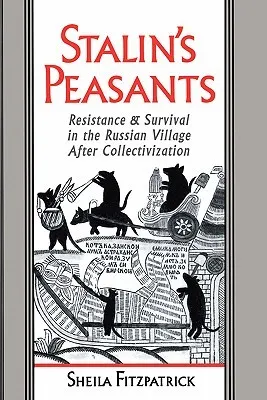Stalin's Peasants: Resistance and Survival in the Russian Village After Collectivization
By (author): "Sheila Fitzpatrick"
Publish Date:
April 21st 1994
ISBN0195104595
ISBN139780195104592
AsinStalin's Peasants: Resistance and Survival in the Russian Village After Collectivization
Original titleStalin's Peasants: Resistance and Survival in the Russian Village after Collectivization
Drawing on newly-opened Soviet archives, especially the letters of complaint and petition with which peasants deluged the Soviet authorities in the 1930s, Stalin's Peasants analyzes peasants' strategies of resistance and survival in the new world of the collectivized village. Stalin's Peasants is a story of struggle between peasants and Communists over the terms of collectivization. But it is also a story about the impact of collectivization on the internal social relations and culture of the village in the 1930s, exploring questions of authority, religious practice, feuds, denunciations, and rumors. For the first time, it is possible to see the real people behind the facade of the "Potemkin village" created by Soviet propagandists. In dramatic contrast to the official story of happy peasants clustered around a tractor and praising Stalin, Fitzpatrick portrays a village in which sullen peasants called collectivization a "second serfdom" and showed their resistance to the new order by working like serfs, that is, doing as little work on the collective farm as they could get away with. Far from naively venerating Stalin as "the good Tsar, " these real-life peasants held Stalin personally responsible for collectivization and the famine, and hoped for his overthrow. Sheila Fitzpatrick's work is truly a landmark in Soviet studies - the first richly-documented social history of the 1930s, whose perspective "from below" sheds a new light on the whole relationship of Soviet state and society during (and indeed after) the Stalin period. Anyone interested in Soviet and Russian history, peasant studies, or social history will appreciate this major contribution to our understanding of life inStalin's Russia.
